


Weekly Specials
Online Shopping; Pickup or Delivery |
|














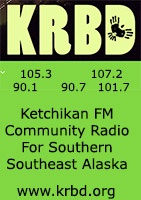
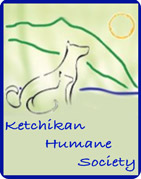

 Contact Contact 
 Webmail
Letters Webmail
Letters
 News Tips News Tips
 Copyright Info Copyright Info
 Archives Archives
Quick News
Search
 Alaska Alaska
 Ketchikan Ketchikan
 SE Alaska SE Alaska
Columns
- Articles
 Dave Kiffer Dave Kiffer
 Money Matters Money Matters
Historical
Ketchikan
 June Allen June Allen
 Dave
Kiffer Dave
Kiffer
 Louise
B. Harrington Louise
B. Harrington
Sports
 Ketchikan Links Ketchikan Links
Public Records
 FAA Accident Reports FAA Accident Reports
 NTSB
Accident Reports NTSB
Accident Reports
 Court Calendar Court Calendar
 Recent Filings & Case Dispositions Recent Filings & Case Dispositions
 Court Records Search Court Records Search
 Sex Offender Reg. Sex Offender Reg.
 Public Notices Public Notices
 AST Daily Dispatch AST Daily Dispatch
 KTN
Police Reports KTN
Police Reports
 Juneau Police Reports Juneau Police Reports
Weather,
Webcams
 Today's
Forecast Today's
Forecast
 KTN
Weather Data KTN
Weather Data
 AK
Weather Map AK
Weather Map
 AK Weathercams AK Weathercams
 AK Earthquakes AK Earthquakes

|
|

Tuesday
August 28, 2018
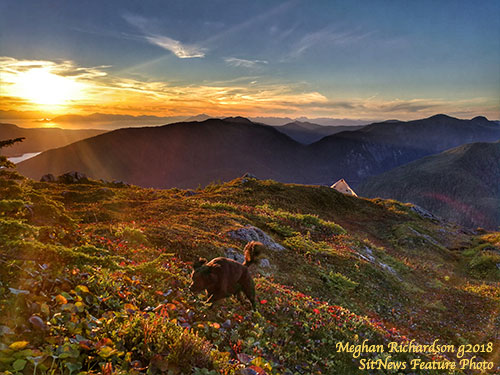
|
Deer Mountain
The photographer's dog Maddie on Deer Mountain. Richardson's tent is visable between the peaks.
Front Page Feature Photo By MEGHAN RICHARDSON ©2018
|
|
Ketchikan: Help for Alaska’s Growing Mariculture Industry Signed Into Law By MARY KAUFFMAN - Alaska’s blue economy took a big step forward yesterday at Trevor Sande’s Hump Island Oyster farm outside Ketchikan, where Governor Bill Walker signed an administrative order and a bill aimed at growing the mariculture industry throughout Alaska.
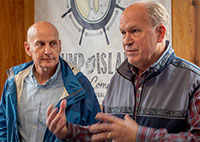
Rep. Dan Ortiz and Gov. Walker at Hump Island Oyster farm.
Photo courtesy Office of the Governor |
Walker signed legislation into law Monday to help participants in Alaska’s growing mariculture industry get access to capital. Representative Dan Ortiz (I-Ketchikan) sponsored House Bill 76 after learning that many of the small businesses in Alaska’s mariculture industry were having trouble securing financing for improvement projects through private lending institutions.
HB 76 changes the Alaska Mariculture Revolving Loan Fund to allow up to 40 percent of the fund to be used for loans to help pay for shellfish and seaweed hatcheries or enhancement projects. Expanding the purview of the loan fund to include hatcheries will allow those invested in the mariculture industry to develop a stable supply of seed for resident marine plants and shellfish at no additional cost to the State of Alaska.
“Mariculture is a uniquely well-suited industry for Alaskan investment,” Governor Walker said. “It expands our strong renewable fisheries industry, creates jobs, offers a scalable business model that can thrive from Alaska’s smallest coastal communities to our largest ports, and opens the door to a new knowledge economy that can be a model for the world. From oysters to scallops to sea cucumbers to kelp, I look forward to seeing how Alaskans approach a new industry frontier.”
“Where private banks see too much risk I see too much potential to pass up,” said Rep. Ortiz. “We have a growing mariculture industry in Alaska that is ready to thrive with some much-needed investment, and we have small businesses in the industry that want to expand. A lack of access to capital is holding back those ready to put in the hard work to ensure success. I believe we took a step forward in solving that problem today with House Bill 76 becoming law.”
The Alaska Mariculture Revolving Loan Fund was created in 2012 with a $5 million investment. The purpose of the fund was to provide loans for the development of Alaskan-owned mariculture operations with a goal of diversifying the economies in many coastal communities. To date, the Alaska Mariculture Revolving Loan Fund has made seven loans totaling $598,000 with no delinquencies or defaults. To better accommodate the time-consuming nature of the mariculture industry and the long lag time from seed to a product that can be sold, HB 76 includes provisions allowing loan repayments to be deferred for up to six years for most loans and up to 11 years for the new hatchery loans authorized by the bill.
New growers are expected to add to the 35 farms and 6 hatchery/nurseries that already are producing a mix of oysters, clams, mussels and various seaweeds. Eventually, sea cucumbers, scallops, giant geoduck clams and algae for biofuels will be added into the mix.
Data from the state Department of Natural Resources show that two farms have applied at Kodiak totaling nearly 37 acres, and one Sitka applicant has plans for a 15 acre plot. Other communities getting into the mariculture act include Seldovia, Port Chatham, Juneau, Naukati, Cordova, Ketchikan and Gustavus.
In 2017, Alaskan farms produced 11,456 pounds of clams, 1,678 pounds of mussels, 16,570 pounds of seaweeds and 1.8 million oysters. - More...
Tuesday PM - August 28, 2018 |
|
Alaska: ‘Abrupt thaw’ of permafrost beneath lakes could significantly affect climate change models By JEFF RICHARDSON - Methane released by thawing permafrost from some Arctic lakes could significantly accelerate climate change, according to a new University of Alaska Fairbanks-led study.
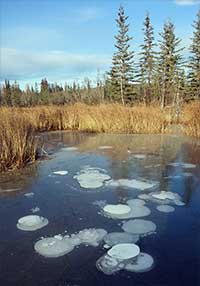
Methane bubbles are trapped in the ice on a pond near Fairbanks, Alaska.
Photo courtesy of Katey Walter Anthony |
The study, which was published Aug. 15 in the journal Nature Communications, focuses on the carbon released by thawing permafrost beneath thermokarst lakes. Such lakes develop when warming soil melts ground ice, causing the surface to collapse and form pools of water. Those pools accelerate permafrost thaw beneath the expanding lakes, providing food for microbes that produce the greenhouse gases carbon dioxide and methane.
Lead author Katey Walter Anthony and her colleagues studied hundreds of thermokarst lakes in Alaska and Siberia during a 12-year period, measuring their growth and how much methane was bubbling to their surface. By combining field work results with remote-sensing data of lake changes during the past two years, they determined the “abrupt thaw” beneath such lakes is likely to release large amounts of permafrost carbon into the atmosphere this century. The lake activity could potentially double the release from terrestrial landscapes by the 2050s.
The effort, conducted by a team of U.S. and German researchers, is part of a 10-year NASA-funded project to better understand climate change effects on the Arctic. Additional support by the National Science Foundation allowed scientists from UAF and the Alaska Division of Geological and Geophysical Surveys to collect data on permafrost location, thaw and associated greenhouse gas release from lakes in Interior Alaska’s Goldstream Valley.
The researchers found the release of greenhouse gases beneath thermokarst lakes is relatively rapid, with deep thawing taking place over the course of decades. Permafrost in terrestrial environments generally experiences shallow seasonal thawing over longer time spans. The release of that surface permafrost soil carbon is often offset by an increased growth in vegetation. - More...
Tuesday PM - August 28, 2018
|
Ketchikan: Waterfall Foundation continues legacy of giving - In 2005, the Waterfall Foundation planted a seed that became the Women’s Diagnostic Imaging Center at Ketchikan Medical Center (KMC). That $25,000 ‘seed’ money helped build a department that provides comprehensive breast examinations for both woman and men.
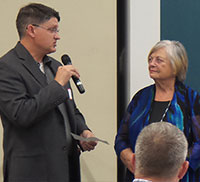
Former Alaska First Lady Nancy Murkowski presented a check on behalf of the Waterfall Foundation for $20,000 to Matt Eisenhower, KMC Foundation Director.
Photo courtesy PHKMC |
This year Waterfall again made a significant donation toward expansion of the Diagnostic Center services to include 3D Mammography.
Former Alaska First Lady Nancy Murkowski chairs the Waterfall Foundation. She presented a check for $20,000 to Matt Eisenhower, KMC Foundation Director, at the recent Waterfall Dinner at the Ted Ferry Civic Center. The dinner marks the start of the annual fundraising fishing derby at the Waterfall Resort to support the Waterfall Foundation.
“I am delighted for this gift and continued partnership with Waterfall Foundation,” said Eisenhower. “Having a longtime supporting organization that believes in the mission of healthcare in Southeast Alaska and knows our community needs is very appreciated.” - More...
Tuesday PM - August 28, 2018
Alaska: Division of Elections Found Some Irregularities in East Anchorage District 15 Absentee Ballot Count - The Alaska Division of Elections, in preparing for the 2018 primary election and in its initial review of absentee ballot applications, discovered some irregularities that prompted a second round of review of all absentee ballots from East Anchorage House District 15. This review only involves the application and the ballot envelope. The division reviewed and count the votes today.
In the Republican primary in that district, just yesterday Republican candidate Aaron Weaver was leading incumbent Rep. Gabrielle LeDoux (R) by just three votes. However today, after the State of Alaska Division of Elections completed the provisional count of all the ballots cast in the House District 15 Republican Primary Election, the incumbent legislator, Gabrielle LeDoux, is reported to be leading Aaron Weaver by 87 votes, excluding the absentee ballots that the division has categorized as suspect. With the suspect absentee ballots included, LeDoux leads Weaver by 113 votes.
The total numbers reported today are as follows: - More...
Tuesday PM - August 28, 2018 |
 |
TOM PURCELL: School Lunch Bell Signals Another Round in Fight - It's back-to-school for millions of American children, which means it's time to debate the federal government's role in deciding what our kids should eat for lunch.
To understand how the federal government got into the nutrition business, a little history is in order.
The government got into the school nutrition business during the Depression. FDR saw an opportunity to feed kids while winning the favor of farmers by buying their food with government money.
In 1946, the Truman administration formalized the feds' school-nutrition role. During both World War I and World War II, after all, the government had noticed some recruits suffered from malnutrition and stunted growth. To address the problem - and win the favor of food producers - the National School Lunch Act was passed into law.
Though there lots of debate and politics still surround the program, the premise is reasonable enough: For some of America's poorest kids, a hot breakfast or lunch at school may be the only decent food they have all day.
In response to America's obesity epidemic, first lady Michelle Obama championed good nutrition through the Healthy, Hunger-Free Kids Act of 2010. It limited fats, sodium and sweets in school lunches, as it reduced portion sizes.
The Trump administration, which argued that many kids refused to eat the healthier, less-tasty fare, relaxed the school-lunch rules. According to Business Insider, kids are again consuming "sugary chocolate milk, fewer whole grains, and around 300 extra milligrams of salt."
All I know is that I surely wish I could have enjoyed hot, government-subsidized grub at St. Germaine School in the 1970s. But my mother, a master at pinching pennies, packed our lunches every day. - More...
Tuesday PM - August 28, 2018
|

Political Cartoon: Green Wave
By Bill Day ©2018, Tallahassee, FL
Distributed to paid subscribers for publication by Cagle Cartoons, Inc.
Rising Above Partisanship By
Rep. Dan Ortiz - Government should represent “We, the people” - not the party leaders, or those who can buy access to power. I believe good governance is about rising above partisanship, which can sometimes get petty, and putting the people first. In order to do that effectively, elected officials need to provide many avenues for people to communicate with them. Door to door communication from one end of our island(s) to the other, letters to the editor, town halls, social media, and email communication are specific examples of the ways that I have done that.
What I have heard from constituents throughout District 36 in those communications is that they want government to reduce its spending, but also maintain vital services. People want their roads paved, particularly Evergreen road in Wrangell, and South Tongass Hwy in Ketchikan. They want Fish and Game to continue to manage our fisheries resources effectively, and they want our growing senior citizen population to be able be able to access government resources in housing and economic assistance so that they can live their lives with dignity here in Southern S.E. Alaska.
Since the beginning of my service, the State’s fiscal situation has been the primary issue that has faced the legislature. Working in cooperation with the leadership of the Walker Administration, the Legislature has reduced the budget deficit by reducing general fund expenditures by 44% – from $8.3 billion in FY 2013 to $4.3 billion in FY 2017. Twenty-six percent of the reductions were in day to day agency operations. The reductions have come at a cost, resulting in significant cuts to the Ak State Fish and Game, DOT, (our roads and the AMHS,) and Senior programs like Pioneer Home Funding. - More...
Friday PM - August 24, 2018
 |
Salmon For All: Hatcheries Support Strong Science and Abundance for Alaskans By
Clay Koplin - Few things define Alaskans more than our love of salmon. Not surprisingly, salmon allocation decisions and fluctuations in resource abundance often spur bitter political battles between user groups. A robust public process rooted in best available science has long been the arbiter of such disputes. As an Alaskan born and raised on the Kenai, and in my current role as Mayor of Cordova, it is with deep consternation that I followed a recent Board of Fisheries evaluation of an emergency petition seeking to restrict hatchery salmon releases in Prince William Sound. The Board narrowly voted to reject the petition averting a dangerous departure from best available science, transparency, and public process; the principles that are the bedrock of our management system.
A broader snapshot of recent and historical abundance reveals many positive trends in our fisheries. It was just a few years ago that Kenai-area dipnetters harvested more than half a million sockeye two seasons in a row. Across Alaska, harvest and abundance of wild Pacific salmon have remained steady for the past twenty years and are markedly higher than pre-hatchery levels. In fact, three of the four largest record-breaking wild salmon harvests occurred in the last five years (2013, 2015, and 2017). Average abundance of wild Cook Inlet sockeye over the past twenty years is more than double than in 1952-1972, and abundance of wild Prince William Sound sockeye has also increased over that same period. If you look at the data, the numbers tell the story.
It is important to recognize the resounding success of the hatchery management program. Salmon hatcheries have been a key component of our state’s commercial, recreational, and subsistence fisheries since the 1970s. Alaska’s hatchery program provides immense economic and social benefit to the entire state, particularly coastal communities like Cordova. The enhanced commercial harvest leads to the creation of processing jobs, fisheries tax revenue, economic investment, and state general fund revenues. An often-overlooked fact is that hatcheries create significant sport fishing opportunities in Prince William Sound and statewide, which increases the summer tourism industry. These benefits are essential to our coastal communities as well as the state, particularly in times of decreasing state budget resources. - More...
Friday PM - August 24, 2018
 |
Open Letter: CPV Proposal for $199,000 toward restoration of two totems By
Mary L. Stephenson - Thank you for permitting an open discussion about the CPV Community Profile, Needs, Priorities and Expenditures, in this example, with the City of Saxman, as they own and manage the Saxman Totem Park; caretakers of a collection of (30) Tlingit carvings from abandoned villages and cemeteries of Tongass, Cat, Village and Pennock Islands as well as Cape Fox Village.
With the exception of the Dogfish Pole, aka Chief Ebbits Pole, all the totems have been replaced since the 1930s and admittedly, the City of Saxman is attempting to replicate for the second time many of those who life’s expectancy exceeds 70 years. (Page 3 CPV Proposal) Master Carver Nathan Jackson as well as the City’s Totem Committee has identified 5 major totems that need immediate attention. Is it a birthright of future generations that totems carved, replicated, restored or installed in the Saxman collection will be at someone else’s expense? When a new story pole has been commissioned, who pays for the carving, restoration or replication during its 80-year lifespan? Is it the responsibility of the caretaker, receiving revenues during its promotion of, obligated to finance the repair or replacement what Mother Nature damaged during its lifetime? Does funding a restoration take higher priority than social, education or mental health programs?
(Page 6 CPV Proposal) Chief Ebbits : Ebbetts Pole lineage comes down through Chief Ebbits, the Head Chief of the Tongass Tribe and a monument that tells an important peaceful story of early Tlingit contact with white traders. Giant Rock Oyster Pole was brought to Saxman from Cape Fox Village and stood in front of the Eagle Claw House; illustrates four emblems related to house groups of the Nexadi clan, descendants of Eagle Claw House. Thus the descendants of the Tongass Tribe and Cape Fox Tribe revere the importance in preservation, yet critical toward non-natives involvement all-the-while (privately) profit in their own entrepreneur endeavors. - More...
Friday PM - August 24, 2018
Pretender President By
Donald Moskowitz - I commend Trump for implementing a $717 billion Defense budget, but I am concerned he has to backtrack on major issues.
At the G7 talks Trump agreed to the dissemination of a joint statement at the conclusion of the talks. After leaving the meeting, and away from the other attendees, he rescinded his support of the statement.
Trump imposed tariffs on imports from China, the European Union, Canada and Mexico without analyzing the consequences. He had to walk back the Canada and Mexico tariffs and is trying to reach an agreement with the European Union. China retaliated by imposing tariffs on our agricultural exports so Trump has to bail out U.S. farmers with $12 billion of U.S. taxpayer funds, and China is developing European Union and other sources for importing agricultural products U.S. farmers previously provided. - More...
Friday PM - August 24, 2018
 Webmail your letter or Webmail your letter or
 Email Your Letter To: editor@sitnews.us Email Your Letter To: editor@sitnews.us
|
Articles &
photographs that appear in SitNews may be protected by copyright
and may not be reprinted or redistributed without written permission
from and payment of required fees to the proper sources.
E-mail your news &
photos to editor@sitnews.us
Photographers choosing to submit photographs for publication to SitNews are in doing so, granting their permission for publication and for archiving. SitNews does not sell photographs. All requests for purchasing a photograph will be emailed to the photographer.
|
|


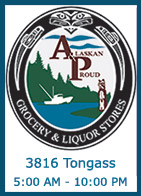















The Local Paper is
available online.
Click here for this week's printed edition (PDF)

|
|

![]() Contact
Contact ![]()
![]() Webmail
Letters
Webmail
Letters![]()
![]() News Tips
News Tips![]()
![]() Copyright Info
Copyright Info![]() Archives
Archives![]() Alaska
Alaska![]() Ketchikan
Ketchikan![]() SE Alaska
SE Alaska![]() Dave Kiffer
Dave Kiffer![]() Money Matters
Money Matters ![]() June Allen
June Allen![]() Dave
Kiffer
Dave
Kiffer![]() Louise
B. Harrington
Louise
B. Harrington ![]() Ketchikan Links
Ketchikan Links![]() FAA Accident Reports
FAA Accident Reports ![]() NTSB
Accident Reports
NTSB
Accident Reports![]() Court Calendar
Court Calendar![]() Recent Filings & Case Dispositions
Recent Filings & Case Dispositions ![]() Court Records Search
Court Records Search![]() Sex Offender Reg.
Sex Offender Reg.![]() Public Notices
Public Notices![]() AST Daily Dispatch
AST Daily Dispatch![]() KTN
Police Reports
KTN
Police Reports![]() Juneau Police Reports
Juneau Police Reports ![]() Today's
Forecast
Today's
Forecast![]() KTN
Weather Data
KTN
Weather Data![]() AK
Weather Map
AK
Weather Map![]() AK Weathercams
AK Weathercams![]() AK Earthquakes
AK Earthquakes










































